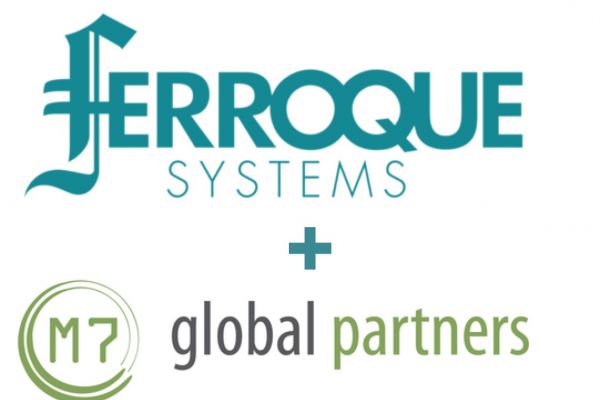
Managed Services in The Modern Economy – Part 4
In Part I of this series, we reviewed the main types of MSP contracts, common expectations of MSP’s in today’s economy, and the importance of defining clear expectations for a healthy MSP vendor-customer relationship. In Part II, we reviewed typical challenges and the benefits MSP’s can provide to address these challenges, focusing on Monitoring and Operations engagement types. In Part III, we reviewed Optimization and Transformation engagement types, the latter of which extends beyond traditional operational outcomes to emphasize delivering business outcomes.
In Part IV of this series, we will conclude this discussion by reviewing indicators customers can use to understand if they are getting the most value from an MSP engagement, and how MSPs can interpret unspoken signals to understand if their customers perceive they are doing a good job.
“Am I Getting Good Value for My Investment?”
Customers frequently ask themselves this question, and it is certainly a good question to ask. We suspect some readers have experienced the feeling that their MSP is ticking all the right boxes but still not providing sufficient value. This is not uncommon and typically indicates their MSP is delivering on the letter of the law but not necessarily on the spirit of the law; i.e. their MSP is fulfilling its contractual obligations but is failing to meet unwritten expectations. Conversely, the opposite could also be true: an MSP may sometimes fall short of meeting contractual SLA(s), but the MSP’s responsiveness, bedside manner, effort, and skillset provide an overall positive customer experience.
The key point is that customers should define success measures beyond just contractual obligations, and these success measures should be discussed with the MSP to ensure everyone has a common understanding of what success looks like. These may not necessarily be hard metrics, and may instead include subjective considerations that may be difficult to objectively measure but are fairly easy to recognize if they are or are not being met. For example, in our experience the following are fairly popular questions that customers ask themselves as an informal barometer of their MSP’s value:
- How often are the customer’s in-house engineers involved in troubleshooting?
- To what extent is in-house IT able to take on more business projects simultaneously and/or deliver those project outcomes more quickly/accurately?
- To what extent do the customer’s business groups perceive IT as an enabler of new business initiatives vs. merely necessary to keep the lights on?
- How often does the customer feel the need to micro-manage their MSP vendor to accomplish in-scope activities?
Let’s take a brief look at each of these questions…
Many customers are motivated to engage an MSP because they want to offload responsibility for all operational tasks, especially troubleshooting. IT organizations that seem to be involved in perpetual troubleshooting, aka firefighting, are challenged to enable new business initiatives because nearly all of IT’s time is spent troubleshooting. Consequently, business groups become frustrated since IT is unable to keep pace with business demands, and new solutions are simply “bolted on” as quickly as possible, which adds to technical debt, which contributes to more issues, thus perpetuating the cycle. The pace of business demands prohibits IT from “catching its breath” and sparse IT budgets cannot afford the costs of hiring enough additional resources to break out of this cycle. Thus, engaging an MSP offers quick relief.
However, some customers find that even after engaging an MSP, some of their key IT personnel are still involved in troubleshooting on a fairly consistent basis, even after the MSP has been engaged long enough to be self-sufficient. Occasionally this is due to individual IT persons not being able to “let go”, but more often than not it is because the MSP does not sufficiently understand the environment, does not have the requisite skillsets, and/or does not have enough sufficiently skilled people dedicated to the account. Regardless of the reason(s), the customer rightly expects the MSP to correct the situation.
Here’s the difference between creating a perception of value vs. frustration: does the MSP proactively recognize and correct the situation or does the customer have to “call out” the MSP and “get on them” to correct it?
Another motivator for engaging an MSP is to free up additional time to fulfill business group demands. Similar to the abovementioned scenario, customers expect that offloading all operational responsibilities to an MSP will enable IT to free up all that time to instead conduct projects that enable new business initiatives. In this capacity, IT can be transformed into a business enabler, rather than the organization that simply “keeps the lights on.”
However, some customers find that even after engaging an MSP, they are still not conducting significantly more business projects and/or are not producing more effective outcomes. Note that this situation is not necessarily the fault of the MSP – there are several potential areas wherein IT may not be doing an adequate job, all of which add up to cause this situation – but regardless of the reason(s), customers will perceive that engaging an MSP did not result in the expected outcomes.
Here’s one key trait of a good MSP: a good MSP proactively engages their customers in conversations that surface such situations, and subsequently brainstorms with customers to identify solution options. For example, such customers may engage technology consultants to address a shortage of in-house manpower or skillsets, or engage certified project managers to address a shortage of in-house expertise to lead complex projects and/or manage a project portfolio, or engage certified process designers to identify and address in-house process gaps that are hampering productivity. Many MSPs, including Ferroque Systems, have dedicated in-house organizations that focus on these specific areas (technology consulting, project management, and process design) to help customers address such challenges.
An additional motivator for engaging an MSP is for IT to change its perception within the company, as over the years many organizations have experienced the emergence of “shadow IT” teams that arose within business groups to help the business fulfill IT-based needs that were not being met by the main IT organization. This is not uncommon and is typically an attempt by the business to fulfill certain IT needs within the business group rather than depending upon the main IT organization, which is perceived as being unable to keep pace with business demands. This is very similar to the abovementioned scenario, and in these situations engaging an MSP in a Transform engagement offers a good solution for IT to become a business enabler (Transform engagement types are reviewed in Part 3). This scenario also highlights the importance of MSPs being able to speak the language of the business; e.g. by tailoring monitoring reports to depict content in a manner that enables business group leaders to make more informed decisions (vs. simply depicting traditional “traffic light” operational metrics). As mentioned previously in this blog series, a good MSP will recognize the importance of incorporating business leaders into the conversation, and will have the skillset (ability) to do so; this is a key ingredient for IT to become a business enabler.
After engaging an MSP, some customers find themselves perceiving the need to consistently micro-manage their MSP vendor; e.g. by requesting daily status meetings, daily status reports, and/or consistently telling their MSP what and how to do something. This is typically triggered by a perception that the MSP consistently falls short of expectations and/or MSP service delivery is consistently of insufficient quality. Beyond being frustrating, the customer’s key challenge with having to micro-manage is that it is typically done by someone in IT leadership (e.g. IT Director), which siphons time and energy away from that person’s ability to focus that time and energy on leading their own IT team(s). Typically, this occurs because the MSP does not sufficiently understand or operate in alignment with the customer’s in-house processes, or “cuts corners” in delivering services. Regardless of the reason, it creates a perception of unfulfilled expectations, usually regarding quality. In this situation, as mentioned above, a key distinction in the customer’s perception of value is whether the MSP proactively recognizes and corrects the situation or the customer has to “call out” the MSP and “stay on them” until it is corrected.
Sometimes the customer’s self-derived conclusions to these questions can carry as much (or perhaps even slightly more) significance in the customer’s perception of MSP value as do contractual SLAs. For this reason, MSPs should periodically self-assess their performance against these questions, in a candid fashion. Savvy MSPs may weave these questions into regular discussions with their customers, to better understand the customer’s perception. The common theme across all of these situations is whether the MSP is proactive or reactive in addressing the situation; proactive fosters a perception of value whereas reactive invites frustration. The key point is that MSPs must not lull themselves into thinking that fulfilling all contractual obligations means their customers perceive them as sufficiently valuable to renew their contracts.
“Am I Doing a Good Job?”
MSPs frequently ask themselves this question, and it is certainly a good question to ask, as the customer’s decision to renew their contract likely hinges upon the answer. It has been our experience that most customers prefer to avoid tense situations, sometimes including potentially difficult conversations to discuss poor feedback with an MSP. For MSPs, this sometimes manifests as the customer indicating everything is fine but does not renew their contract. For this reason, it is important for MSPs to consistently put themselves in their customers’ shoes to assess how good of a job they really are doing. For example, in our experience the following considerations are often good indicators of how an MSP is perceived by their customers:
- Is the MSP regularly roped into complex situations to solicit their advice/guidance?
- Is the MSP invited to customer strategic meetings and annual planning sessions?
- How often does the customer escalate concerns, including outside of the MSP’s Delivery Team?
- How often does the customer call/text (rather than email) their MSP key contacts unsolicited, outside of during an outage or major incident?
Let’s take a brief look at each of these questions…
One of the most telling ways for an MSP to get an indication of their perceived value to their customers is how often customers involve them in conversations to help address fairly complex situations; i.e. how often customers seek their advice/guidance. In fairly complex situations, it is a natural tendency for people to reach out to folks whom they perceive will be most helpful in addressing a situation in the most efficient manner. This includes reaching out to folks who are perceived to potentially have direct solutions as well as to folks who may not necessarily have a solution but who are perceived as thought leaders and thus whose opinion/guidance is deemed valuable (i.e. someone who is not necessarily expected to have an answer but who can point in the right direction). Naturally, a customer’s MSP should be perceived as a go-to source of insights and solutions for operational elements; as well, since the MSP is embedded within the IT organization, an MSP’s sphere of perceived value should extend to relevant areas such as leveraging the MSP’s problem-solving acumen to help identify potential solutions for technical challenges that are not considered incidents nor problems.
Another barometer of perceived value (that is fairly closely related to the above) is how often customers involve their MSP in strategic planning sessions in which IT is involved; e.g. annual planning sessions. Beyond operational responsibilities, a good MSP is also valued for their technology industry/market insights, strategic thinking and ability to translate technology planning into reality, and ideas on how a company’s existing technologies could be better leveraged to enhance productivity/efficiency. An MSP’s ability to operate in this capacity is largely influenced by their knowledge of how IT systems are used to enable employees to perform their daily functions; i.e. the MSP must be very familiar with how end-users use IT systems/applications to do their jobs. To gain this knowledge, at some point early in the engagement, an MSP will typically perform a series of “day in the life of” sessions to get first-hand visibility into how end-users interact with/use IT systems (e.g. sometimes this is performed as part of establishing a system’s performance baseline). This insight is very valuable during annual planning sessions when companies are trying to determine how their IT systems can be leveraged to enable new business initiatives or to increase efficiencies for existing business functions, as well as identifying the IT areas that present most risk of disrupting employees’ ability to perform these business functions. A good MSP is able to engage at this level to provide strategic thinking; indeed, this is explicitly highlighted as part of an MSP Transform engagement, and if customers often find themselves leveraging their MSP in this fashion then that is a good indication that a Transform engagement is a good fit for their needs.
The abovementioned concepts are fairly subtle ways in which customers indicate perceived value; more obvious ways include how often the customer escalates concerns/issues, including outside of the MSP Delivery team (this is also considered as a barometer of the strength of the relationship between the customer and the MSP). Occasional escalations are okay; however, a customer who feels the need to regularly escalate concerns/issues is a concern unto itself, as it indicates the customer likely perceives issues with the MSP’s quality of service delivery. Note the issue may not necessarily be with the MSP itself, but could instead indicate that the customer is unhappy with the perceived quality of their IT environment, which is the MSP’s responsibility to maintain. In these situations, if the MSP Delivery team has established a solid relationship, the customer will feel confident in the Delivery team’s ability to address concerns and will not want to “go over” the Delivery team to (for example) escalate to the MSP’s sales or senior leadership teams. This is an important distinction, as service delivery involves the same group of persons working closely together every day, so it is important for trust and confidence to permeate the group. As well, it may seem a bit counter-intuitive, as escalations can erode trust and confidence, but it is also often the case that a constructive response to such escalations can booster that trust and confidence.
As hinted at above, the value customers perceive from their MSP is partially influenced by the strength of the customer-MSP relationship. If customers feel that their MSP does not have much of a vested interest in their customers’ success, the working relationship will often be fairly transactional rather than imbue a sense of “this is the right team”, which tends to make difficult situations more challenging to address since the level of trust and confidence is often not where it should be. One subtle indicator of a constructive working relationship is how often a customer calls or texts their MSP key contacts. It is natural for someone to minimize (to the extent possible) interactions with people with whom they do not feel they get along well, and calling or texting – especially calling – is a more immediate and engaging level of communication (vs. email), thus over time it tends to be used a bit more frequently by people who share a natural comfort level. Note that this one is a bit tricky, as there are many folks who simply prefer email over other forms of communication, so while a higher occurrence of phone communication can indicate a stronger working relationship, the absence of such does not necessarily indicate a weak working relationship.
Overall, these are just some of the indicators and unspoken signals an MSP should regularly consider; viewed together, the eight considerations highlighted in this blog post are good informal indicators that MSPs can use to understand how good of a job their customers perceive they are doing and how much value they are providing, beyond the attainment of contractual commitments such as SLAs.
In closing out this blog series, I will use an analogy to help illustrate the primary theme of this series: when people decide to vacation on a cruise or to a theme park, all major cruise and theme park vendors provide the same “contractual commitments” (e.g. room/hotel, meals/restaurants, excursions/rides, etc.); the key differentiator is in how vacationers perceive the quality of such services, and to a large extent that is determined by whether vacationers perceive an immersive or transactional experience. Similarly, managed services in the modern economy have evolved to the point wherein customers expect their MSP to have a vested interested in their success and operate as a valued partner who works an extension of their in-house IT team, and represents the customer’s expected level of expertise, professionalism, and accountability in delivering its services (beyond just fulfilling contractual commitments).
Let’s Talk
At Ferroque, we understand and strive to deliver on these expectations, and we hope this blog series has been an insightful and helpful part of constructing an informed opinion regarding whether or not managed services (and the type of managed service) is a good fit for your organization. Our Managed Services practice has been designed from the ground up for the modern economy, by some of the best minds in the business. If your organization has a potential need for Managed Services or Managed Digital Workspaces capabilities, we welcome the opportunity to discuss how we can help improve availability, reduce risks, avoid unplanned costs, and further enable your users for growth. Please contact us at your convenience, we would be happy to review your unique needs.








